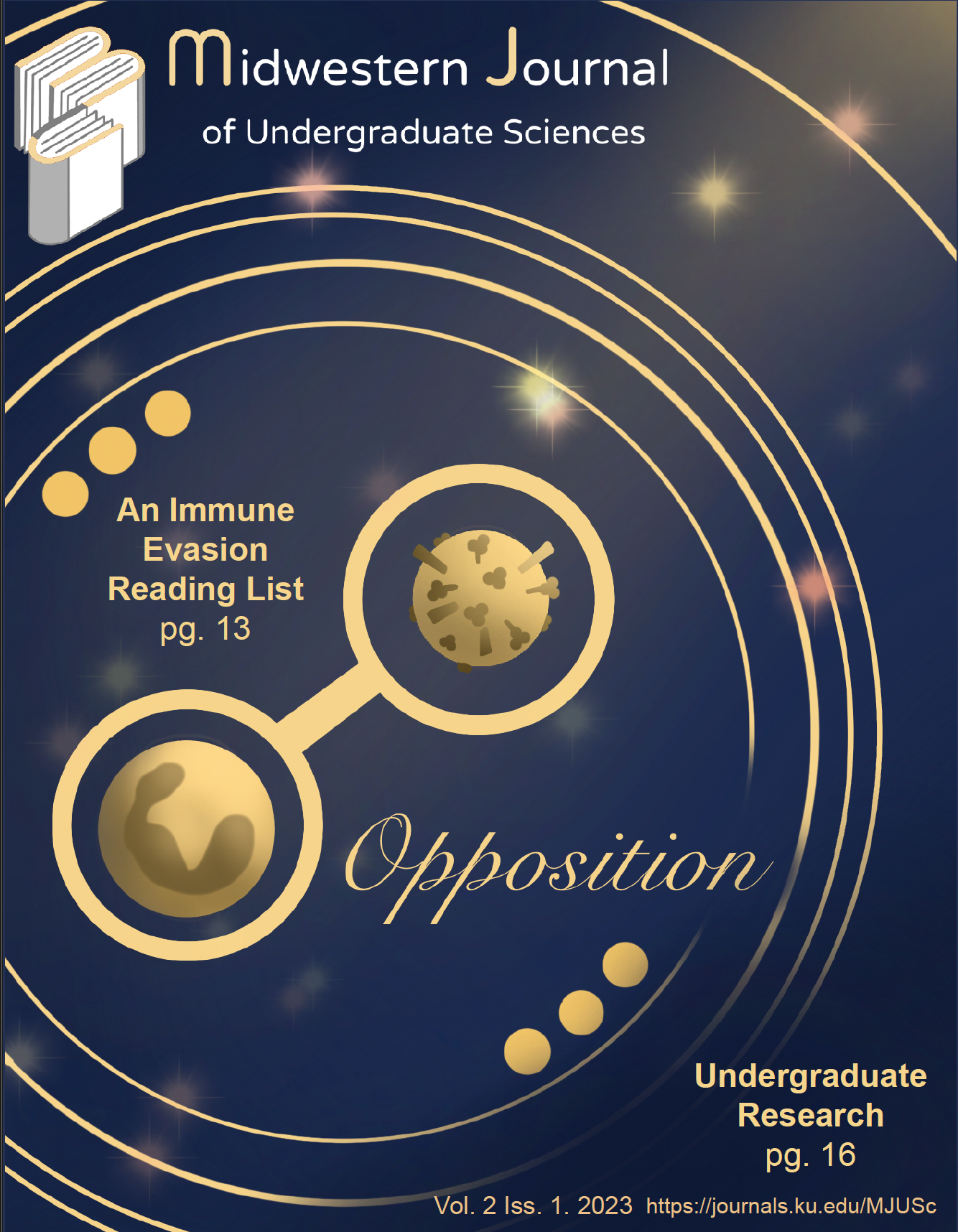Analysis of the Antioxidant & Antimutagenic Potential of CGA, a phenolic component of Coffee, in Inhibiting Mutations in Salmonella typhimurium
DOI:
https://doi.org/10.17161/mjusc.v2i1.21712Keywords:
Antioxidant, CGA, Caffeine, coffeeAbstract
Excess cellular radical oxygen species are associated with an increase in cellular, including genetic
damage. In somatic cells, this may lead to cancer when genes associated with cell growth
and reproduction are impacted. Opposing radical oxygen species are antioxidants which can
quench free radicals that otherwise may damage a cell’s DNA. The body produces some antioxidants
naturally, such as glutathione, while others are obtained through diet, including vitamins
C and E. Chlorogenic Acid (CGA) is one example of a polyphenolic compound in coffee
with the potential to exhibit antioxidant and antimutagenic properties. The concentration of
CGA in a commercially available coffee was measured and its potential to exhibit antioxidant
properties was assessed. An extract was prepared in which the spectral properties of CGA
were exploited to quantitate its concentration in green coffee extract via HPLC. The antioxidant
activity of CGA was characterized by measuring its relative ability to neutralize free radicals using
a colorimetric assay vs. a pure vitamin C standard. The antimutagenic activity of CGA was
to be assessed via an Ames test using mutant Salmonella strains incapable of producing the
amino acid histidine. The results demonstrated a considerable amount of CGA in green coffee
extract, that exhibited antioxidant properties. Future work will assess antimutagenic effects
of CGA in the extract compared to the antimutagenic effect of vitamin C and pure CGA standards.
Overall, these results suggested that coffee beverages may serve as potent antioxidants
with the potential to protect consumers from the harmful effects of mutagenic free radicals.
References
Human cytomegalovirus inhibits antigen presentation by a sequential multistep process. https://www.pnas.org/doi/10.1073/pnas.93.20.10990 doi:10.1073/pnas.93.20.10990.
Wiertz, E. J. et al. The human cytomegalovirus US11 gene product dislocates MHC class I heavy chains from the endoplasmic reticulum to the cytosol. Cell 84, 769–779 (1996).
Rademeyer, C. et al. Features of Recently Transmitted HIV-1 Clade C Viruses that Impact Antibody Recognition: Implications for Active and Passive Immunization. PLoS Pathog 12, e1005742 (2016).
Montefiori, D. C., Robinson, W. E. & Mitchell, W. M. Role of protein N-glycosylation in pathogenesis of human immunodeficiency virus type 1. Proc. Natl. Acad. Sci. U.S.A. 85, 9248–9252 (1988).
Liang, Y. et al. Changes in Structure and Antigenicity of HIV-1 Env Trimers Resulting from Removal of a Conserved CD4 Binding Site Proximal Glycan. J Virol 90, 9224–9236 (2016).
Downloads
Published
Issue
Section
License
Copyright (c) 2024 Ambreen Niaman, Jack Treml, Randall Logan

This work is licensed under a Creative Commons Attribution-NonCommercial 4.0 International License.
© The Author(s)
This work is licensed under a Creative Commons Attribution-NonCommercial 4.0 International license.

